How Come Cosmic Inflation Doesn’t Break The Speed Of Light?

If it can stretch the Universe from the size of a subatomic particle to billions of light years in a fraction of a second, why doesn’t Einstein’s relativity forbid it?
When you think about where the Universe came from, you likely think about the hot Big Bang as our origins. According to the Big Bang, we began with an early, dense, uniform state of high-energy matter and radiation, which then expanded, cooled and clumped together to become the Universe we inhabit today. But prior to the Big Bang itself, the Universe underwent a period of cosmic inflation, which set up the initial conditions our observed Universe today was born with. During inflation, the Universe expanded exponentially, stretching the fabric of a minuscule region of space to be far, far larger than the observable Universe is today in only a tiny fraction of a second. Any two particles would see one another recede far faster than the speed of light, setting up a paradox: if nothing can travel faster-than-light, how does inflation work? The answer will literally change how you view the Universe.

Einstein’s special theory of relativity is one of the most important advances made during the 20th century. It states that there’s a speed limit to the Universe: the speed of light, and that no two particles can ever move faster than that relative to one another, even if they’re massless. But most people don’t understand what that last part — relative to one another — actually means. What Einstein’s theory actually says is that any two observers at the same event in spacetime cannot move relative to one another faster than c, the speed of light in a vacuum. But what is an event? It’s the same location in both space and time. In other words, the fact that the speed limit of c is the Universal speed limit only applies to two objects at the same point at the same time.
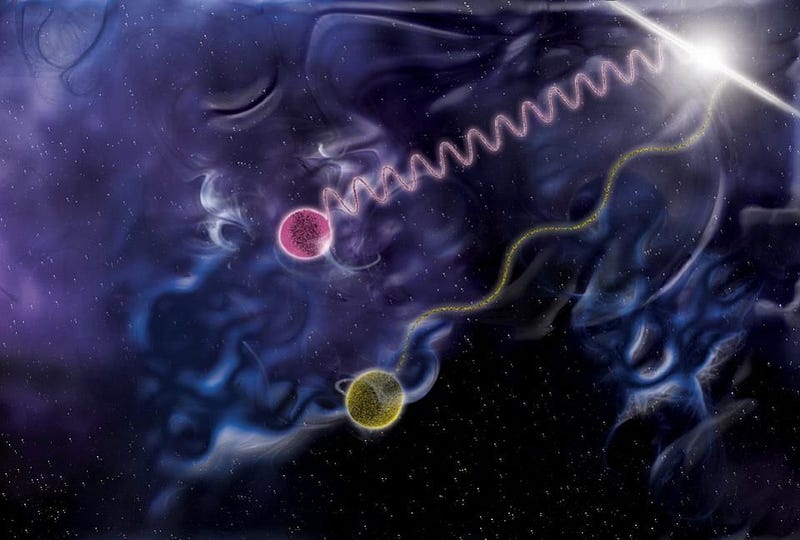
This doesn’t mean that objects can break the cosmic speed limit! But it does mean that unless you’re at the same point at the same time, different observers will disagree as to how fast objects are moving. If two rocket ships speed away from you, one to your left and one to your right, at 60% the speed of light, you’ll see them moving away from each other at 120% the speed of light. They’ll each see you moving away from themselves at 60% the speed of light, but they’ll only see the other ship moving away at 88% the speed of light. And if they live in an expanding Universe, things get even weirder.
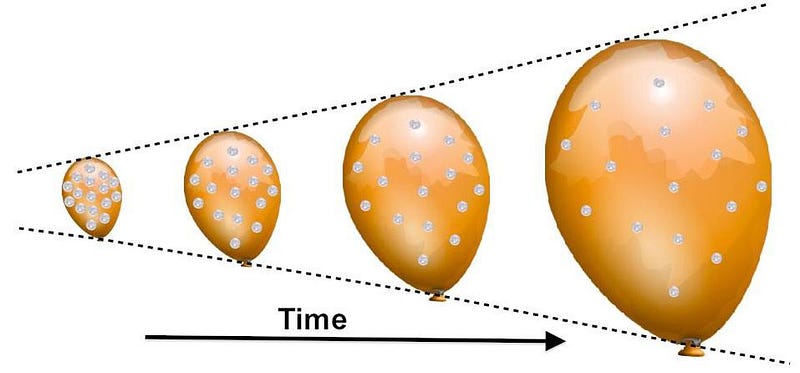
Because the speed limits only apply to two objects at the same spacetime event, objects that are separated from one another — say, by space — are subject to whatever additional motions are happening due to the fabric of space itself changing. If space is expanding (or contracting) between you and the object you’re watching, it will appear to move away from you (or towards you) even more quickly: apparent motion is a combination of your special relativistic motion and the general relativistic phenomena of evolving space. Whatever rate space is expanding (or contracting) at will cause the light from it to be redshifted (or blueshifted) by a particular amount, causing that object to appear to move away from you even if its special relativistic motion is zero.
In our Universe today, the light arriving from a distant galaxy is shifted into the red because the Universe is expanding. The expansion rate was greater in the past, and for this, more distant objects appear to be receding even more quickly than a naive extrapolation of the expansion rate would indicate: this is because our Universe doesn’t simply contain matter and radiation, but dark energy as well. The way the expansion rate changes over time is determined by what your Universe is made up of. For the first few thousand years after the Big Bang, radiation dominated. For billions of years after that, matter dominated. And today, it’s dark energy. But before the Big Bang, space expanded at an exponential, enormous rate, which stretched the Universe flat and gave it uniform properties everywhere. This was during the period of cosmic inflation.
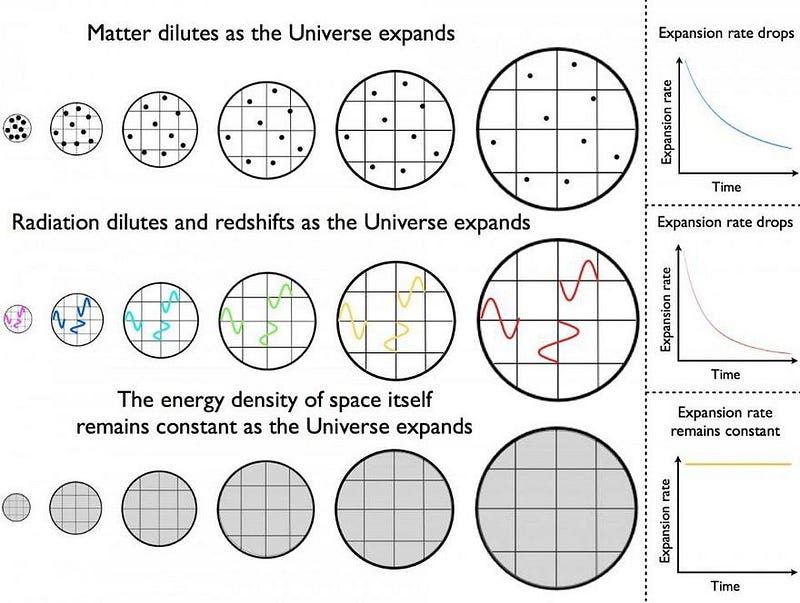
Exponential expansion means that rather than having the expansion rate slow as time goes on, at having distant points recede from one another at ever slower speeds, the expansion rate doesn’t drop at all. As a result, distant locations — as time goes on incrementally — get twice as far away, then four times, eight, sixteen, thirty-two, etc.
Because the expansion is not just exponential but also incredibly rapid, “doubling” happens on timescale of around 10^-35 seconds. Meaning, by time 10^-34 seconds have passed, the Universe is around 1000 times its initial size; by time 10^-33 seconds have passed, the Universe is around 10³⁰ (or 1000¹⁰) times its initial size; by time 10^-32 seconds have passed, the Universe is around 10³⁰⁰ times its initial size, and so on. Exponential isn’t so powerful because it’s fast; it’s so powerful because it’s relentless.
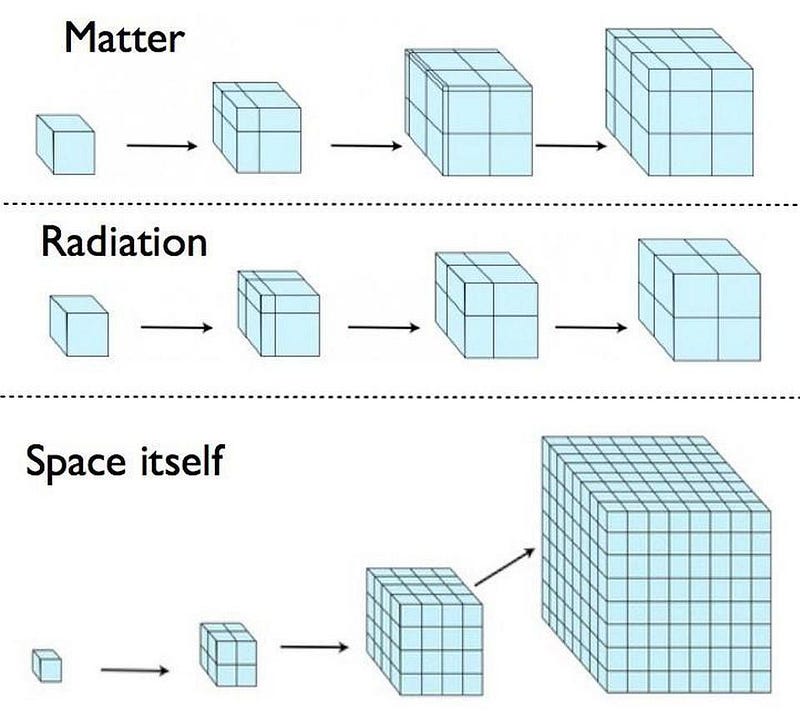
If two particles are created very close to one another during this inflationary state, they still have to obey the laws of special relativity: they can only move relative to one another at speeds less than (or equal to, if they’re massless) the speed of light. But the space between them is free to expand at whatever rate the Universe dictates. If that means you’d extrapolate their relative speed to be greater than the speed of light by combining the effects of relative motion (special relativity) with expanding space (general relativity), there’s nothing forbidding that. You’d simply be mistaken for attributing the entirety of the apparent cosmic motion to special relativity. And you don’t even need to go to an inflationary state to run into that problem.
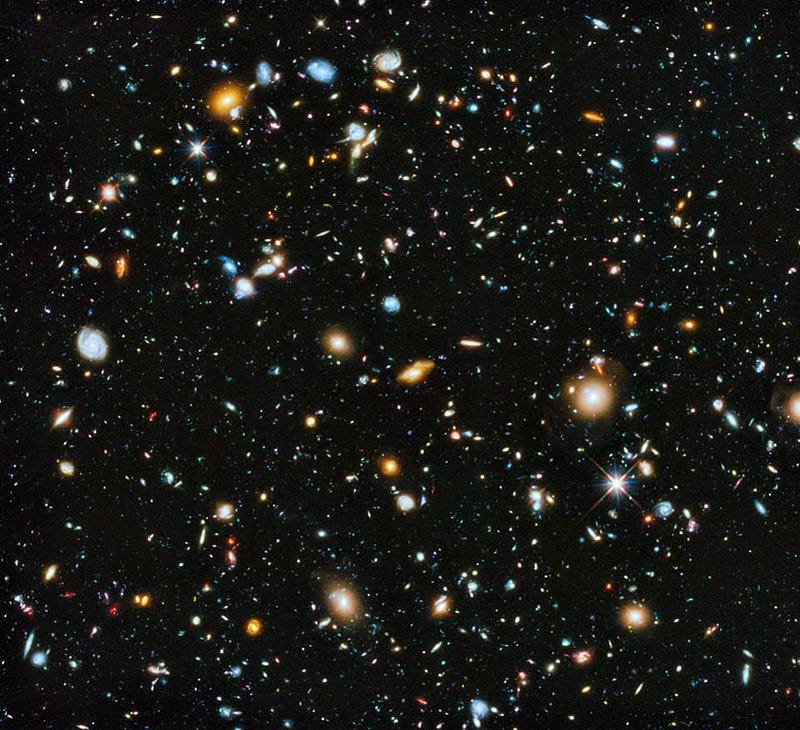
If you take a look at the galaxies in our Universe today, the ones that lie beyond about 15 billion light years already appear to be receding from us faster than the speed of light. If you got into a spaceship today and took off towards them at the speed of light, you’d never reach them. The expansion of the Universe teaches us that the rate that the fabric of space is stretching is greater than the distance we can cover even at light speed; the distance between us and them increases by more than a light year with each year that goes by. Beyond a critical distance in the Universe, all the galaxies that reside there are already forever out of reach. There is no theoretical bound on the expansion rate because it itself isn’t a speed, but rather a property of the Universe that’s determined by the amount of energy in it. Today, that rate is around 70 km/s/Mpc, but during inflation, it was likely some 10⁵⁰ times higher.
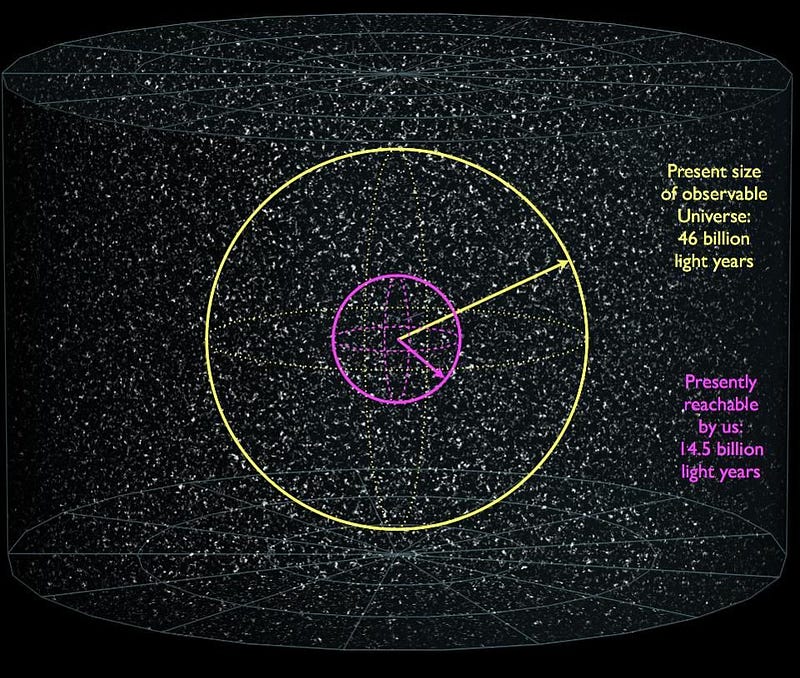
In an inflationary Universe, any two particles, beyond a tiny fraction of a second, will see the other one recede from them at speeds appearing to be faster-than-light. But the reason for this isn’t because the particles themselves are moving, but rather because the space between them is expanding. Once the particles are no longer at the same location in both space and time, they can start to experience the general relativistic effects of an expanding Universe, which — during inflation — quickly dominates the special relativistic effects of their individual motions. It’s only when we forget about general relativity and the expansion of space, and instead attribute the entirety of a distant particle’s motion to special relativity, that we trick ourselves into believing it travels faster-than-light. The Universe itself, however, is not static. Realizing that is easy. Understanding how that works is the hard part.
Ethan Siegel is the author of Beyond the Galaxy and Treknology. You can pre-order his third book, currently in development: the Encyclopaedia Cosmologica.





